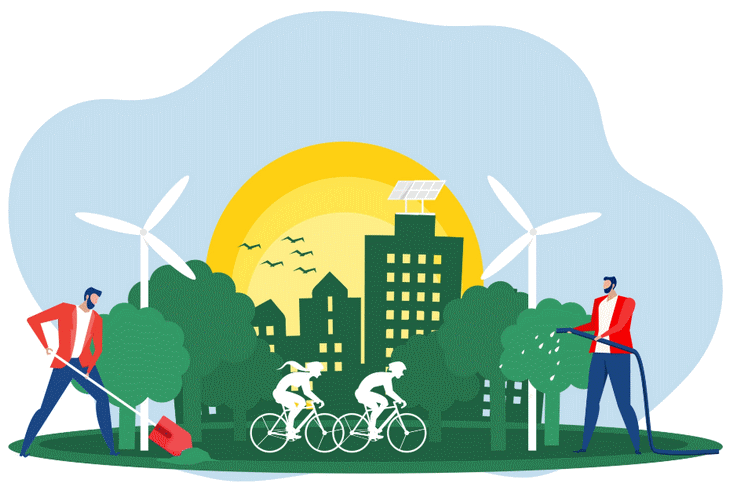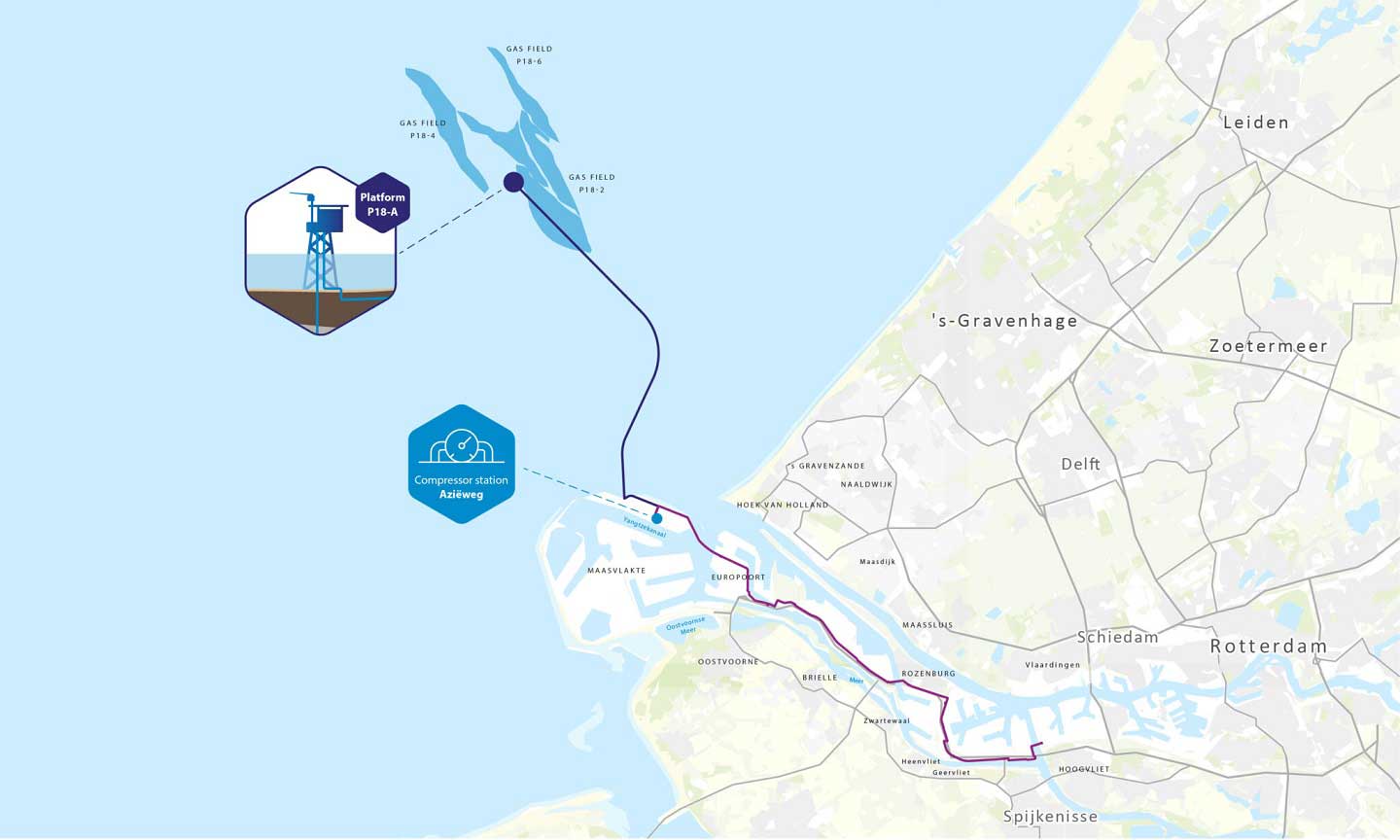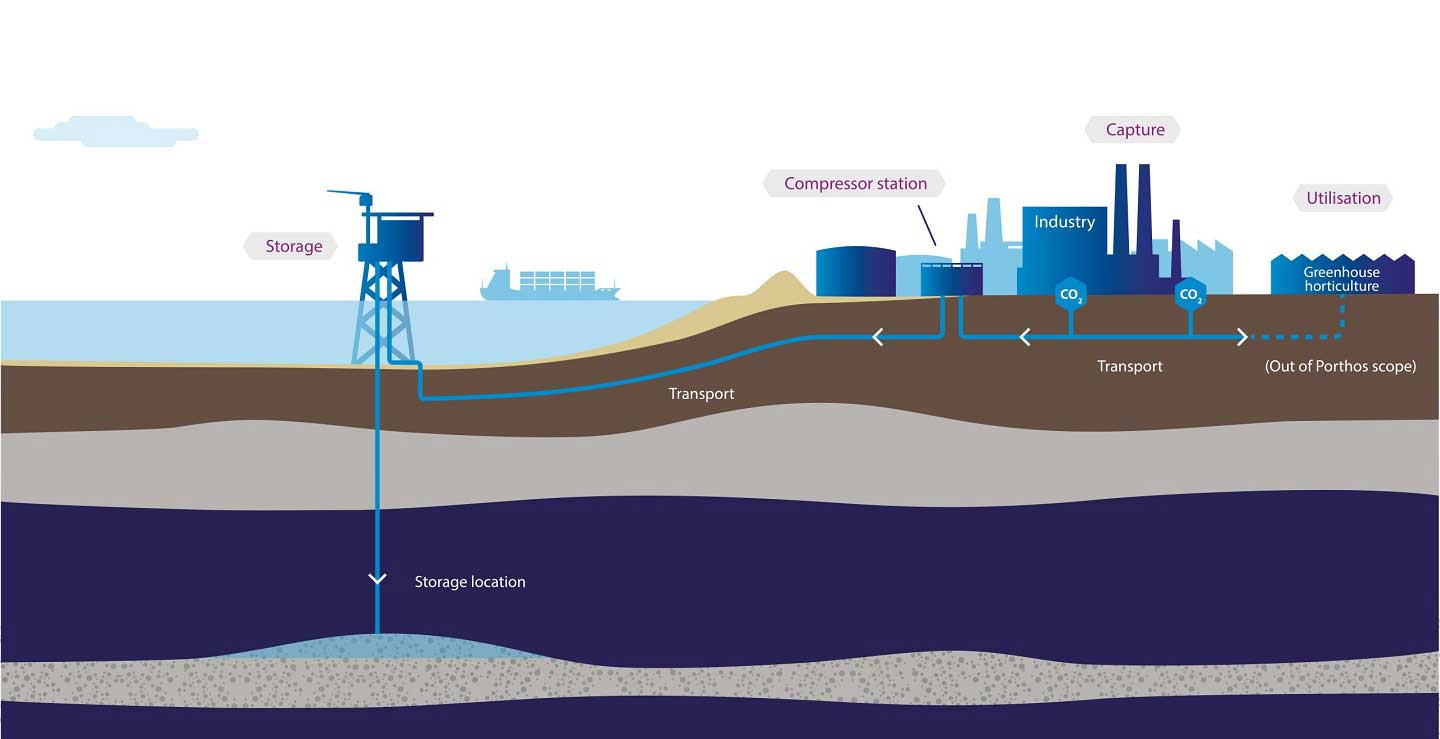First CO2 storage project in the Netherlands is launched
Oct 9, 2023 Porthos has made a final investment decision to develop the first major CO2 transport and storage system in the Netherlands. Construction will begin in Rotterdam in 2024 and the Porthos system is expected to be operational in 2026. The Porthos infrastructure requires an investment of 1.3 billion euros. Now that the final investment decision has been made, Porthos will award the contracts needed to realize the project.
Port of Rotterdam Transport Hub and Offshore Storage
Porthos is a joint venture of EBN (Energie Beheer Nederland), Gasunie and the Port of Rotterdam Authority. Porthos will provide transport and storage services to several companies in the Port of Rotterdam, including Air Liquide, Air Products, ExxonMobil and Shell. These companies will invest in their own capture plants to deliver CO2 to Porthos.
Porthos will transport the CO2 through the port of Rotterdam to depleted gas fields in the North Sea, about 20 km offshore, where it will be permanently stored at a depth of 3 to 4 km below the sea floor. Porthos plans to store about 2.5 Mton per year for 15 years, totaling about 37 Mton. With this, Porthos has contracted its full storage capacity. The onshore transportation system currently under construction will enable future CO2 storage projects.
Hans Meeuwsen, Porthos director: "CO2 storage is crucial if we want to achieve the climate goals in the Netherlands. This investment decision is an important starting point for future developments in CO2 storage in the Netherlands."
Carbon Capture and Storage (CCS) is a cost-effective way to keep large amounts of CO2 emissions out of the atmosphere in the short term. It is therefore an important pillar of the Dutch government's climate policy. Thanks to Porthos, Rotterdam's port industry will soon be emitting about 10% less CO2. At the same time, the industry is working on the transition to processes based on sustainable energy and raw materials.
Above image shows a schematic of how CCS works. Below is the description of CCS. (Graphic courtesy of Porthos, only availabe in Dutch)
- In CO2 capture, CO2 is separated from gas before it is used. The captured CO2 is then compressed into a liquid form or gas for transport.
- Both pipelines and ships can be used to transport compressed CO2.
- CO2 is injected deep underground into the microscopic spaces of porous rock - that is, a soil with cracks and holes in it. A layer of impermeable rock that serves as a sealing layer lies directly above the porous rock and ensures that CO2 remains there permanently.
- Monitoring of storage sites takes place in the storage reservoir and at the injection well, where sensors can detect small changes in pressure or CO2 levels. In addition, monitoring can also take place near the injection well to demonstrate that the CO2 actually remains stored.
- In the future, we are also likely to see more CCUS, or Carbon Capture, Utilization and Storage. Here much of the CO2 is used first (the U in the abbreviation; Utilization is Use) and only what remains is stored. CO2 is already being (re)used in fertilizer production, for example, or in growing flowers in greenhouses.
To realize the project, Porthos is working with TAQA Energy, the current operator of the P18 gas fields, and specialized contractors and suppliers such as Denys N.V., Allseas, LMR Drilling GmbH, Mannesmann Grossrohr GmbH, Corinth Pipeworks, Equans, Ensco Offshore, Van der Ven and Bonatti. Together, under the leadership of Porthos, they will provide the necessary infrastructure.
The European Union has recognized Porthos as an important project for achieving climate goals. Porthos has been declared a Project of Common Interest and has been awarded a 102 million euro grant.
Reference(s) .. www.porthosco2.nl


